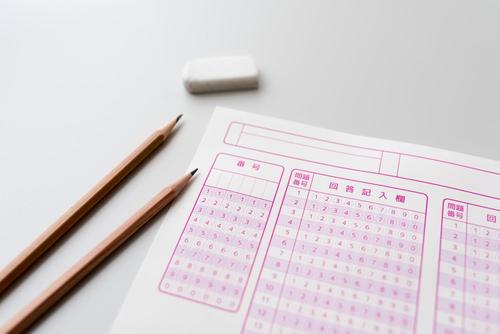The Japanese Language Teaching Proficiency Test is one of the exams required to work as a Japanese language teacher. It is said to be a difficult exam to pass, but if you are aiming to become a Japanese language teacher, it is a test you should take as it serves as a gauge of your ability to teach Japanese.
Here we explain how difficult the Japanese Language Teaching Proficiency Test is, as well as an overview of the test, pass rates, and question trends. We also introduce recommended study methods, so please use this as a reference when taking the test.
Overview of the Japanese Language Teaching Competency Test

First, we will explain the overview of the Japan Teaching Aptitude Test.
What is the Japanese Language Teaching Competency Test?
The Japanese Language Teaching Proficiency Test is an exam aimed at people involved in Japanese language education and those studying to become Japanese language teachers, and tests their proficiency in basic Japanese language teaching skills and knowledge.
It is possible to become a Japanese language teacher or teach Japanese without this qualification, but many schools and companies use passing this exam as a hiring criterion, and since anyone can take the exam, it can be said that it is an exam worth taking.
Japanese Language Teaching Competency Test Structure, Exam Scope and Trends
Looking at the outline of the Japanese Language Teaching Competency Test, which was conducted in 2019 and is scheduled to be conducted in 2020, including the question structure, test scope, and trends, it is composed of the following three items.
・Exam I: This exam measures basic knowledge that will lead to practical use in Japanese language education. The exam is 90 minutes long and is worth 100 points.
・Test II: Audio questions will be given on "problem-solving ability" and "basic knowledge." You will have 30 minutes to answer and will be worth 40 points.
・Exam III: This test measures whether you have sufficient on-site ability and basic problem-solving skills as a Japanese language teacher. The answer time is 120 minutes, and the score is 100 points.
The exam covers five areas: "1. Society, Culture, and Region," "2. Language and Society," "3. Language and Psychology," "4. Language and Education," and "5. General Language." In particular, there seems to be a tendency for the content tested to be concentrated in "4. Language and Education" and "5. General Language."
The "Language and Education" section tests curriculum organization skills, teaching methods, and methods for evaluating student abilities, as well as items such as misuse analysis and teaching material development. The "General Language" section tests knowledge of world languages, comparisons with Japanese, understanding of Japanese grammatical structure and phonology, as well as interpersonal relationships and the ability to adjust to different cultures.
Eligibility to take the Japanese Language Teaching Competency Test
There are no specific requirements for taking the Japanese Language Teaching Proficiency Test, and anyone can take it. However, if you are aiming to become a Japanese language teacher directly after graduating from high school without completing 420 hours of courses related to Japanese language education, you should consider passing the test a must.
Japanese Language Teaching Competency Test Pass Rates and Trends

Next, we will explain how difficult the Japanese Language Teaching Competency Test is, the reasons for this, and the pass rate.
Pass rate for the past three years
The pass rates for the Japanese Language Teaching Proficiency Test conducted over the past three years are as follows:
FY2019: 28.2% (9,426 applicants, 2,659 passed)
FY2018: 28.3% (6,841 applicants, 1,937 passed)
FY2017: 25.4% (5,767 applicants, 1,463 passed)
The pass rate itself is not very high, and it can be said that it is a difficult qualification, but the pass rate has been increasing year by year, and the number of test takers is also increasing.
Trends and difficult points of the Japanese Language Teaching Competency Test
One of the reasons the Japanese Language Teaching Competency Test is considered difficult is the breadth of its scope. In addition to the vocabulary and grammar necessary for teaching Japanese as an academic subject, candidates are also required to have the problem-solving skills of an educator and knowledge of international affairs and culture.
In addition, the above test areas also include an audio listening test, so taking specialized listening preparation measures is important for passing the test.
What measures should I take to pass the Japanese Language Teaching Competency Test?
How to study for the Japanese Language Teaching Competency Test

Now that you know the trends, pass rate, and difficulty of the Japanese Language Teaching Competency Test, we will also explain how to study for it.
Is it difficult to pass the exam by self-study?
Looking at the trends and pass rates for the Japanese Language Teaching Proficiency Test, it is clear that it is a difficult qualification to take and pass straight away. If you are trying to pass the test on your own with no prior knowledge of Japanese language education, you will need to thoroughly practice past exam questions and devote a considerable amount of time to studying the textbook thoroughly.
Past exam questions and textbooks are commercially available, so it is not impossible to pass the exam by self-study if you put in the effort, but it is also true that it can be difficult because you will need to put in time and effort in addition to studying, such as creating an efficient study schedule and choosing the right textbooks.
To be more thorough, we recommend taking a course
If you are aiming to obtain a qualification without any prior knowledge of language or education, not just Japanese, we recommend taking a course and taking the exam. An efficient study schedule leading up to passing the exam and textbooks that align with it will be provided, so you can significantly reduce the time you spend thinking about "what to choose and what to focus on studying."
Compared to studying on your own, taking a course can be difficult if you don't have the financial means. Also, even if you take a course, it may be difficult to pass if you neglect self-study.
By taking a course and learning efficient study methods that focus on key points, the quality of your self-study will also improve. In particular, one of the disadvantages of self-study is that it tends to be up to you whether you do it or not. By deciding to take a course, you will be able to maintain your motivation to study, which will also support you in aiming to pass with a strong will.
summary

The Japanese Language Teaching Proficiency Test is not a required qualification to become a Japanese language teacher, but it is important for those aiming to become a Japanese language teacher directly from a completely new background, and it is a qualification that is used as a hiring guide by many schools and companies. The test covers a wide range of topics, including Japanese grammar and teaching ability, as well as the ability to respond to international situations and different cultures, and there is also a listening test, so considerable preparation is required.
It is a difficult qualification with a pass rate of less than 30%, but it is not impossible to pass by self-study, and taking a course will make it easier for you to pass.
This article has been partially re-edited by KARUTA from an article originally published on "Nihongo Biyori."
Any unauthorized reproduction or use of the contents, text, images, illustrations, etc. of this website is strictly prohibited.
